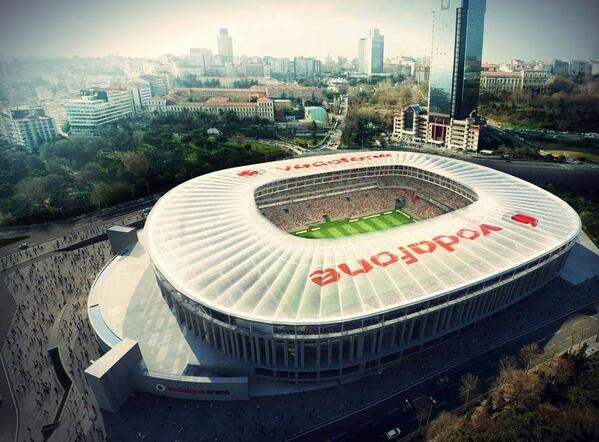How Vodafone Is Improving 4G At Sports Stadiums

Vodafone has been testing all manner of techniques to make it easier to cope with a fivefold increase in traffic since 4G arrived
Vodafone is introducing a range of mobile technologies at stadiums across Europe in a bid to tackle the perpetual issue of network congestion at major sporting events.
Small cells, network densification and additional spectrum are but three methods advocated by infrastructure manufacturers and mobile operators and Vodafone’s Madrid-based ‘Networks Centre of Excellence’ has tested several things out across its European networks.
The company claims that mobile data use at stadiums has increased fivefold since the advent of 4G, which has allowed fans to share images and watch videos from their seats. There is a peak in traffic at the start and at the end of matches, as well as the obvious surge at half time.
Stadium 4G
In total, Vodafone believes fans on its network use their smartphone for a third of the time they are in the stadium and that roaming offers have encouraged people to even access data when they’re attending away matches in the UEFA Champions League or other competitions.
“Rapidly increasing mobile demand creates particular challenges for network engineers,” said Aitor Garcia Viñas, a delivery manager at the Centre of Excellence.
“There can be over a thousand mobile antennae in a football stadium, causing up to 10 times the normal levels of network interference (the cause of dropped calls, problems connecting and higher device battery drain). There is also highly volatile network demand as the crowd reacts to in-game events.”
His team has been able to double capacity at some stadia using traffic-based adaptive network features and 4×4 and 4×2 MIMO technology, as well as reduce interference by adding hundreds of antennae that point down at the seats in the stand.
Another technique to reduce interference, this time by up to 200 percent, is the use of a 4G centralised radio access network (RAN), which has been successfully used at the Santiago Bernabeu, the home of Real Madrid, Bologna’s Stadio Renato Dall’Ara and the San Siro, which plays host to both Inter Milan and AC Milan.
LTE Broadcast technology was tested out at the home of Borussia Mönchengladbach’s ground in Germany to make video transmissions more efficient, and Voice over LTE (VoLTE) has been used to improve voice coverage and quality.
Vodafone says 750 hours of phone calls were made by its customers during the 2016 Champions League Final at the San Siro.
For mobile operators, the desire to improve coverage at major events is understandable. If customers aren’t able to use their phones, they then might choose to leave the network for a rival.
In the UK, rival EE has vowed to make Wembley the world’s most connected stadium as part of its sponsorship deal with the home of football. The stadium is a high profile testbed for EE’s future network technologies, including 360Mbps LTE-Advanced.
Are you a tech Olympian? Find out with our sporting IT quiz!